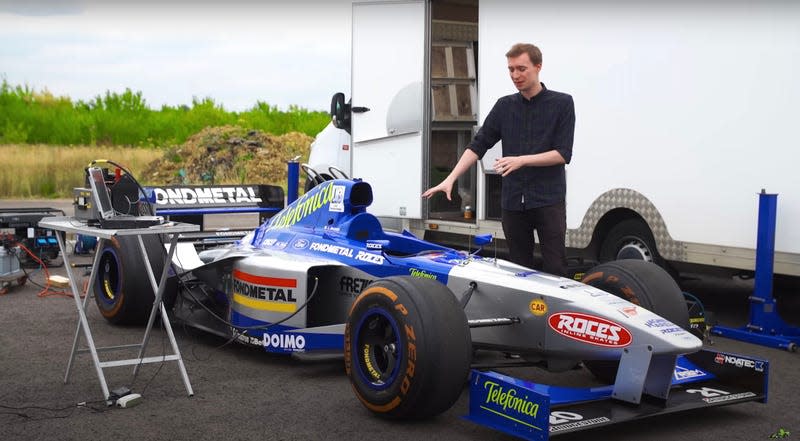Here’s Why Old F1 Cars Take Hours To Start Up

Old race cars are amazing, and while it may be tough to keep something exotic like a Ferrari endurance racing prototype from the 1960s on the road, nothing else has anything on Formula 1.
In case you missed it:
For example, did you know that it takes literally hours of time, tens of thousands of dollars worth of equipment, and a handful of people just to fire up one of the V10 cars? And that’s a car from the late 1990s, like the 1998 Ford Minardi car in this video by YouTuber Matt Amys.
Read more
Why Formula 1 Cars Take Hours To Start
In order to run at peak performance and rev to the stratosphere, making all the glorious noise that the V10 era of F1 is known for, the tolerances of the Ford V10 have to be tight. So tight that if the car were to be started at whatever the ambient air temperature around it is, it would experience dramatically accelerated wear on its internal components.
To help avoid that, the engineers from UK company Tour De Force, which specializes in running old Formula cars, preheat the engine’s fluids using some decidedly alchemical-looking apperati to gently warm up the water system in the car to a minimum of 122 degrees Fahrenheit which warms up all the rest of the car’s fluids and keeps everything happy.
From there, the car gets cranked over by hand to build oil pressure, and then a special hydraulics pack gets attached to the car to make sure there is no air in the hydraulic system that runs everything on the car, from the usual stuff like the brakes and clutch to the throttles. The car is also hooked to an ancient laptop computer that not only runs Windows 95 but which also isn’t too fast because too fast a laptop will skew the data coming in from the car’s many sensors. A separate battery pack prevents all this prep from draining the car’s tiny battery.
So, if the idea of owning and running a classic Formula 1 car sounds amazing, and you hate the idea of people hoarding these cars as static objects, get ready to spend a veritable boatload of greenbacks to get them out on track. Of course, when the money you spend makes the kinds of noises that these cars do, it’s kind of worth it, don’t you think?
More from Jalopnik
Sign up for Jalopnik's Newsletter. For the latest news, Facebook, Twitter and Instagram.

 Yahoo Autos
Yahoo Autos 